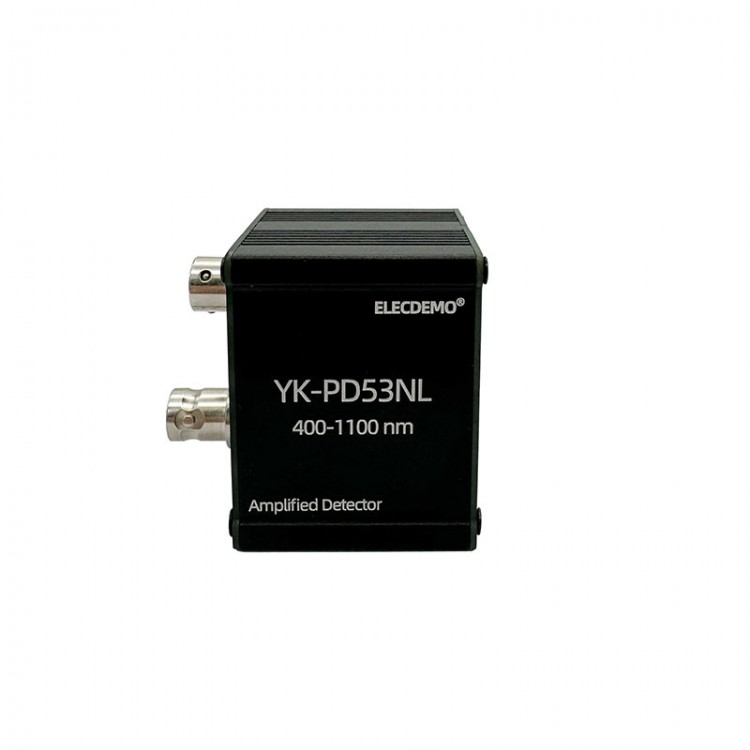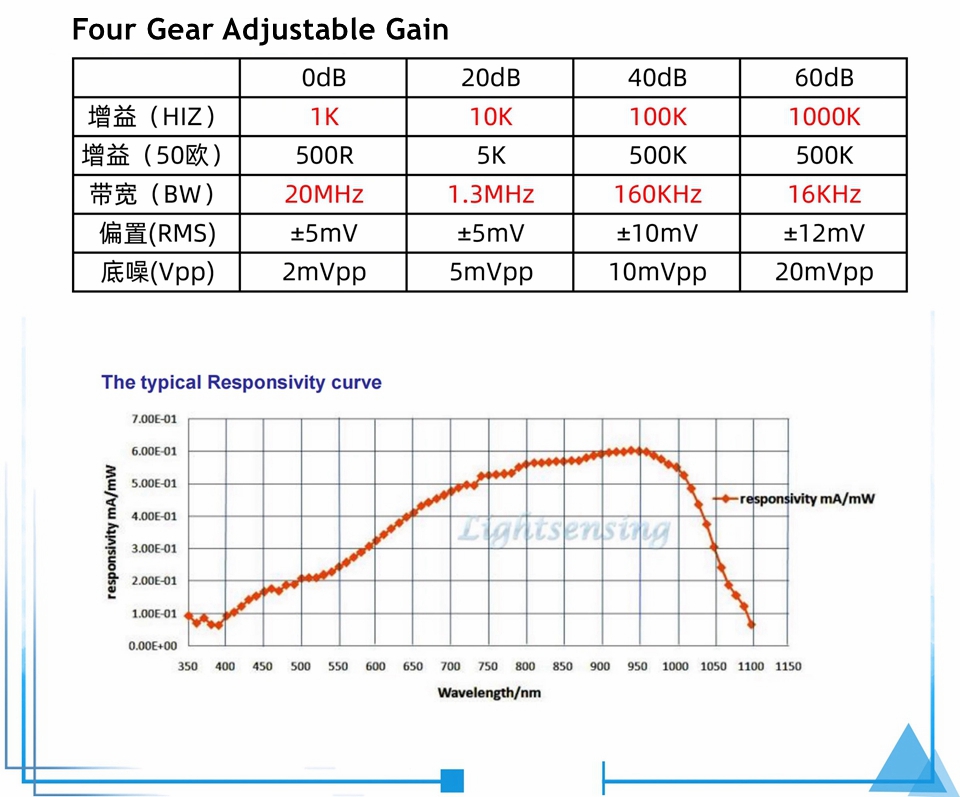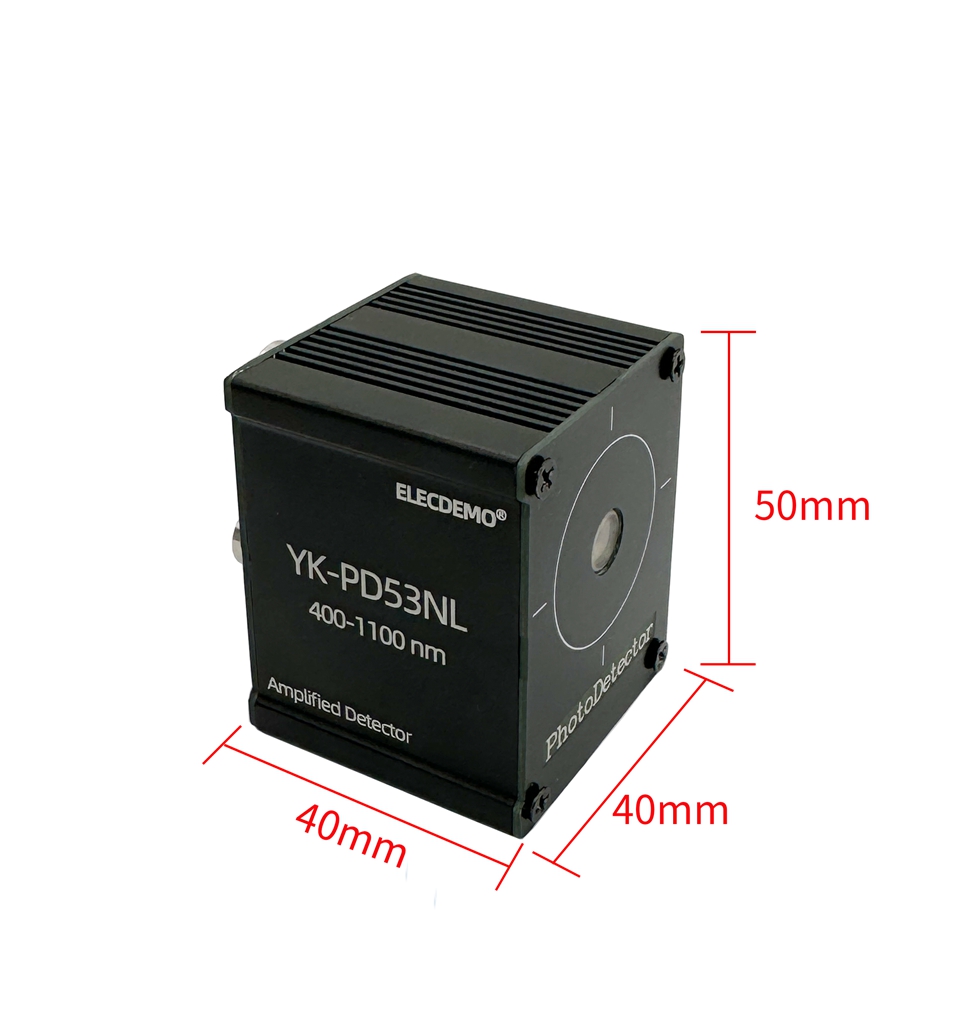
| Quantity | 3+ units | 10+ units | 30+ units | 50+ units | More |
|---|---|---|---|---|---|
| Price /Unit | $324.08 | $317.46 | $307.54 | $294.31 | Contact US |
 BU-5 Bluetooth Module Radio Bluetooth Adapter Unit for Yaesu FTM-150R FTM-510DR Transceiver
$55.79
BU-5 Bluetooth Module Radio Bluetooth Adapter Unit for Yaesu FTM-150R FTM-510DR Transceiver
$55.79
 STF10M1000M-25 RF Power Amplifier 10-1000MHz 25W-30W Wideband RF Amplifier without Radiator and Cooling Fan
$490.69
STF10M1000M-25 RF Power Amplifier 10-1000MHz 25W-30W Wideband RF Amplifier without Radiator and Cooling Fan
$490.69
 STF10M1000M-25 RF Power Amplifier 10-1000MHz 25W-30W Wideband RF Amplifier with Radiator and Cooling Fan
$543.48
STF10M1000M-25 RF Power Amplifier 10-1000MHz 25W-30W Wideband RF Amplifier with Radiator and Cooling Fan
$543.48
YK-PD53NL 400-1100nm Transimpedance Photoelectricity Detector 4-Level Gain Adjustable High Speed Photodetector
Description:
- YK-PD53NL is a high-speed and high bandwidth photodetector with a gain coefficient that can be adjusted in four levels within the range of 1-1000KV/A. The circuit gain bandwidth is greater than 20MHz, and it has the characteristics of extremely high bandwidth and low bias current. Compatible and adaptable to the vast majority of high-speed photodiode PDs. The low ripple precision power supply paired with the detector ensures excellent noise performance of the amplifier within a bandwidth of 20MHz. Usually used in pulse light conversion, laser ranging, high-speed photoelectric detection, and fluorescent substance detection.
Specification:
- Model: YK-PD53NL
- Module type: photoelectric detector
- Input optical band: 800 - 1700nm
- Photo-surface: 1 x 1mm
- Input optical power: 20mW (max)
- Photo-current minimum resolution: 1nA
- Gain coefficient: 1 - 1000KV/A (4-level adjustable)
- Linearity: better than 1%
- Circuit gain bandwidth: DC-20MHz
- Rising time: 50nS (min)
- Output impedance: 50ohms
- Output voltage range: ±10V (Hi-Z), ±5V (50ohms)
- Output current: ±1mA (max)
- Module weight: 68g
- Module size: 50 x 40 x 40mm, M6 positioning screw hole
- Module heating: without heat dissipation sheet, no need to cooling for normal working
- Working temperature: -25℃ ~ 40℃
- Module feature: high speed current to voltage
- Application: photoelectric detector, data acquisition front-end, weak signal detection, etc.
- Module interface: 3PIN aviation socket, BNC female connector
Precaution:
- The power supply for the detector is a precision low ripple power supply, and the aviation plug must be stably inserted to ensure normal power supply.
- As the detector is a high-precision and high-speed device, it is recommended to use matching wires to avoid unnecessary interference.
- The input light intensity should not exceed the range, as poor contact or inferior wires may cause signal attenuation or excessive noise.
Package Included:
- 1 x Detector Module
- 1 x Universal Adjustment Bracket
- 1 x Low Ripple Precision Power Supply
- 1 x 30CM BNC-BNC Cable
FAQ:
Q: Why is there almost no response to the output after corresponding light irradiation?
A: Firstly, it is necessary to confirm how much light power is received by the sensor, and the photoelectric tube will form a corresponding current size. Based on the current size, the output voltage can be calculated. If the light power is too small, the output will have almost no response.
Q: Why is there a lot of noise in the input current signal and output voltage?
A: Firstly, you should use the matching wires for wiring and measurement. The input wires should not be too long or unshielded, as this can easily introduce external noise. The input current circuit should be as short and shielded as possible.

